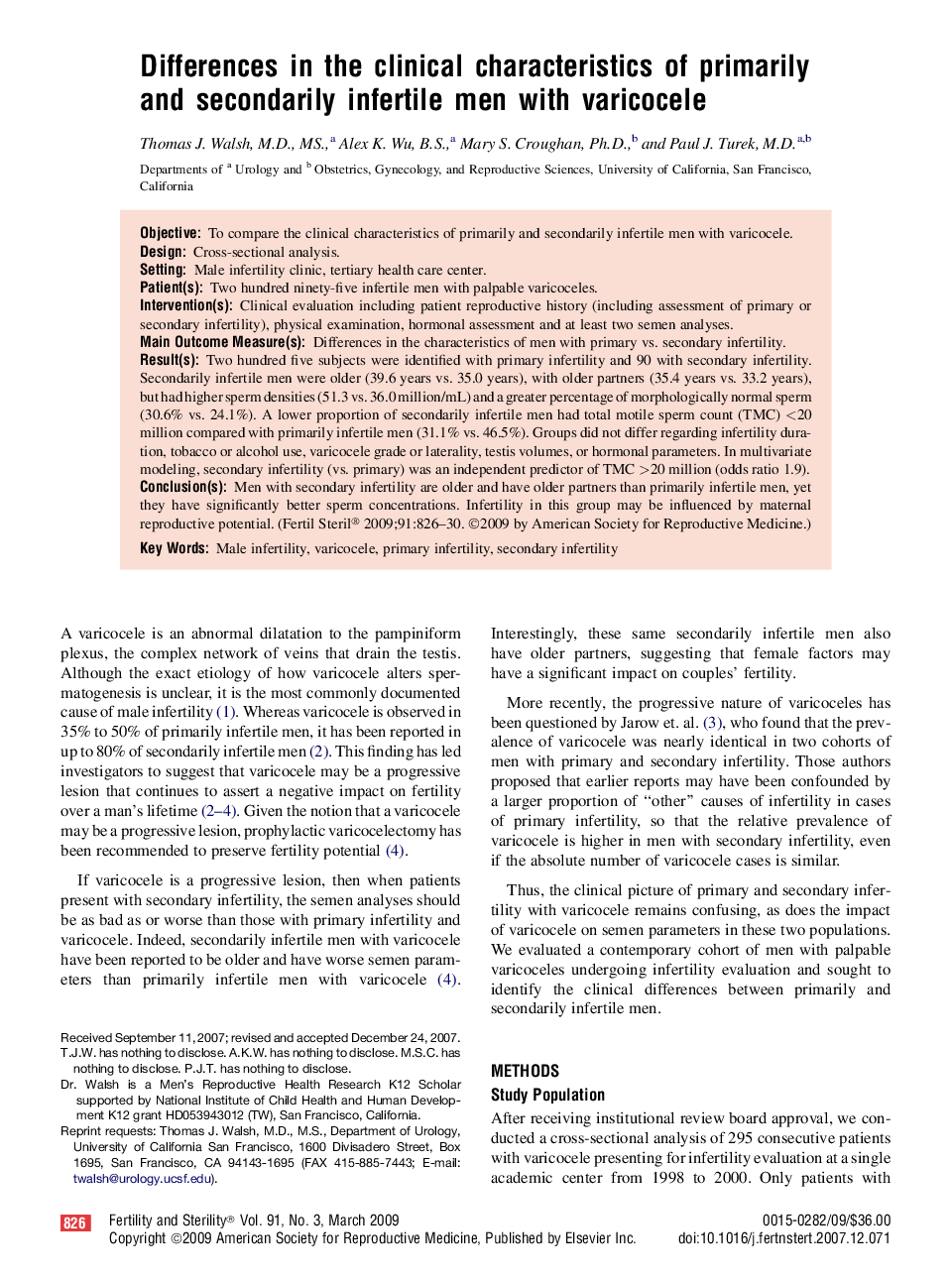| Article ID | Journal | Published Year | Pages | File Type |
|---|---|---|---|---|
| 3936968 | Fertility and Sterility | 2009 | 5 Pages |
ObjectiveTo compare the clinical characteristics of primarily and secondarily infertile men with varicocele.DesignCross-sectional analysis.SettingMale infertility clinic, tertiary health care center.Patient(s)Two hundred ninety-five infertile men with palpable varicoceles.Intervention(s)Clinical evaluation including patient reproductive history (including assessment of primary or secondary infertility), physical examination, hormonal assessment and at least two semen analyses.Main Outcome Measure(s)Differences in the characteristics of men with primary vs. secondary infertility.Result(s)Two hundred five subjects were identified with primary infertility and 90 with secondary infertility. Secondarily infertile men were older (39.6 years vs. 35.0 years), with older partners (35.4 years vs. 33.2 years), but had higher sperm densities (51.3 vs. 36.0 million/mL) and a greater percentage of morphologically normal sperm (30.6% vs. 24.1%). A lower proportion of secondarily infertile men had total motile sperm count (TMC) <20 million compared with primarily infertile men (31.1% vs. 46.5%). Groups did not differ regarding infertility duration, tobacco or alcohol use, varicocele grade or laterality, testis volumes, or hormonal parameters. In multivariate modeling, secondary infertility (vs. primary) was an independent predictor of TMC >20 million (odds ratio 1.9).Conclusion(s)Men with secondary infertility are older and have older partners than primarily infertile men, yet they have significantly better sperm concentrations. Infertility in this group may be influenced by maternal reproductive potential.
